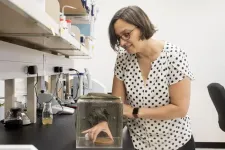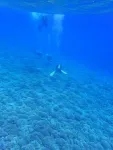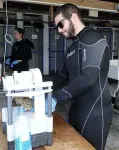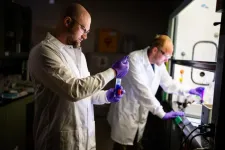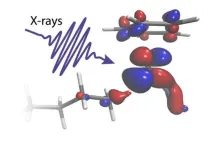(Press-News.org) Driven by a lifelong curiosity about the natural world and the diversity of life, Elizabeth King, associate professor in the Division of Biological Sciences at the University of Missouri, found inspiration to spend her formative years studying science — and along the way she discovered her passion for biology. That foundation has led her to pursue an ongoing career working to develop a better understanding of genetic traits from a biological perspective.
Recently, the National Institutes of Health (NIH) awarded King a five-year, $1.9 million grant to expand her lab’s research focused on experimental biology using a fruit fly model. The goal of the project is to develop a knowledge base surrounding complex traits or characteristics — like a fruit fly’s flight performance and endurance — that are determined by the interconnectedness among many factors, including multiple genes and the environment. King said the research will help address a scientific knowledge gap found in this field of study.
“Science hasn’t fully grappled with the ‘complex’ part of complex traits, and that’s left a significant knowledge gap in our understanding of the genetic basis of these traits,” King said. “Our work embraces this complexity by focusing explicitly on the interconnectedness between multiple high-order traits and the sub-phenotypes that come together to shape them. Overall, this research will provide generalizable lessons about how genomes are connected to physiology to produce the interconnected set of traits that affect health across the lifespan.”
While King’s research is focused on basic science knowledge, she hopes the data gathered over the span of the five-year project can one day be applied by other scientists studying human genetics. For instance, one aspect of the research will focus on trait hierarchies, or how traits are organized into different groups called phenotypes and sub-phenotypes. She said many human traits are organized in comparable ways.
“For instance, a person’s risk of a heart attack results from a combination of a lot of different phenotypes and sub-phenotypes found at different levels,” King said. “So, with this project we’re looking at traits structured in similar ways in flies, such as flight performance, and dissect the genetics across the genotype-to-phenotype map to see if we can come up with some general lessons about what these traits are really like because they’re so complex we haven’t really figured them out yet. We’ve developed hypotheses for why that might be the case, and we’re hoping to harness the power of the fly model to figure that out.”
Using fruit flies as a model to understand the general principles across the diversity of life can also be highly relevant to understanding how traits function in humans.
“Like we do with other species, fruit flies share common ancestry with humans,” King said. “In a lot of cases once we figure out a gene’s function, we can then connect that trait to something similar in humans. It’s estimated that around 75% of genes in the Drosophila genome have a relationship to disease-related genes found in humans.”
The grant, “Genome evolution across complex trait hierarchies” is funded by NIH.
END
Biologists to create ‘toolbox’ for understanding complex genetic traits
The National Institutes of Health awarded Elizabeth King at the University of Missouri a five-year, $1.9 million grant to expand her research on genetics using a fruit fly model.
2023-06-01
ELSE PRESS RELEASES FROM THIS DATE:
Salton Sea environment detrimental to respiratory health of local children
2023-06-01
RIVERSIDE, Calif. -- In the United States, low-income immigrant and minority children often live in environments that have highly polluted air. A study led by researchers at the University of California, Riverside, demonstrates this among the Latinx and Purépecha immigrant children and caregivers living along Inland Southern California’s Salton Sea, a highly saline drying lakebed surrounded by agricultural fields. The Purépecha community is an Indigenous group from the Mexican state of Michoacán.
“Children of Latinx ...
Fellowship offers reporters valuable insight as America ages
2023-06-01
The Gerontological Society of America (GSA) has received renewed grant support to welcome a new class of reporters for the Journalists in Aging Fellows Program. The 2023 funders to date include Silver Century Foundation, The John A. Hartford Foundation, Archstone Foundation, and NIHCM Foundation.
Since its founding in 2010, this program has been responsible for more than 800 news stories produced by 217 alumni. It has two goals: to educate journalists about issues in aging, better allowing them to spread a new awareness to general-audience, ethnic, and other minority populations; ...
Critical decision-3A clears way toward standard model test
2023-06-01
NEWPORT NEWS, VA – The U.S. Department of Energy has given the greenlight for the MOLLER experiment to begin procurement of key components with its granting of Critical Decision-3A (CD-3A): Approve Long Lead Procurements. The determination allows the MOLLER project at DOE’s Thomas Jefferson National Accelerator Facility to begin spending $9.14 million for long-lead procurements of critical items for which designs are complete.
After imagining what it would look like for 17 years, Krishna Kumar felt chills the first time he saw fully engineered drawings of the MOLLER experiment.
“Seeing the designs on paper gave me pins and needles,” said Kumar, professor of ...
Sandia scientists achieve breakthrough in tackling PFAS contamination
2023-06-01
ALBUQUERQUE, N.M. — A team at Sandia National Laboratories is developing materials to tackle what has become one of the biggest problems in the world: human exposure to a group of chemicals known as PFAS through contaminated water and other products. Sandia is now investing more money to take their research to the next level.
“It’s in the news constantly. It seems every day we hear of another product that is contaminated. We saw sparkling water with PFAS, toilet paper with PFAS, so it’s ...
Better search for the cause of hereditary diseases
2023-06-01
So far, it has not been possible to explain the causes of around half of all rare hereditary diseases. A Munich research team has developed an algorithm that predicts the effects of genetic mutations on RNA formation six times more precisely than previous models. As a result, the genetic causes of rare hereditary diseases and cancer can be identified more precisely.
Variations of genetic sequence occur relatively frequently – on average, one in a thousand nucleotide of a person’s genome is affected. In rare cases, these changes can lead to defective RNAs and hence non-functional proteins. This can lead to dysfunction in individual organs. If a rare disease is suspected, computer-assisted ...
Cross-cultural analysis reveals evolution and persistence of body-based measurement systems
2023-06-01
Body-based units of measure have cognitive and behavioral advantages over standardized measurement systems, according to a new cross-cultural analysis of the use of body-based measurement in more than 180 cultures worldwide, particularly in the design of ergonomic technologies. The findings reveal new insights into body-based measurement as a cultural phenomenon and may help explain the long-term persistence of their use for centuries after the emergence of standardized measurement systems were invented. The ability to measure things plays a central role in how humans understand and interact with the surrounding world and are important drivers in cultural complexity ...
Autonomous realignment and self-healing in multilayer soft electronic devices
2023-06-01
By combining two dynamic polymers, researchers present a new method for achieving autonomous realignment and self-healing in multilayered soft electronic devices and robots, according to a new study. Like human skin, self-healing polymers allow soft electronic and robotic devices to recover autonomously from various forms of damage. Such devices are often multilayered and embedded with conductive or dielectric materials to achieve functional properties while also maintaining the soft mechanical properties of the self-healing ...
Low-temperature method for 3D printing nanoscale optical-grade glass
2023-06-01
A hybrid organic-inorganic polymer resin enables the three-dimensional (3D) printing of nanoscale optical-grade glass at temperatures roughly half of what other approaches require, researchers report. According to the authors, the approach may help redefine the paradigm for the free-form manufacturing of silica glass and enable its use across a wide variety of new technological applications. Silica glasses possess a unique combination of properties, making them one of the most important materials for ...
Study tracks social, genetic evolution in Asian colobine primates
2023-06-01
CHAMPAIGN, Ill. — Asian colobines, also known as leaf-eating monkeys, have been on the planet for about 10 million years. Their ancestors crossed land bridges, dispersed across continents, survived the expansion and contraction of ice sheets and learned to live in tropical, temperate and colder climes.
A new study reported in the journal Science finds parallels between Asian colobines’ social, environmental and genetic evolution, revealing for the first time that colobines living in colder regions experienced genetic changes and alterations to their ancient social structure that likely enhanced their ability ...
X-rays visualize how one of nature’s strongest bonds breaks
2023-06-01
Embargoed until 1-Jun-2023 14:00 ET (1-Jun-2023 18:00 GMT/UTC)
The use of short flashes of X-ray light brings scientists one big step closer toward developing better catalysts to transform the greenhouse gas methane into a less harmful chemical. The result, published in the journal Science, reveals for the first time how carbon-hydrogen bonds of alkanes break and how the catalyst works in this reaction.
Methane, one of the most potent greenhouse gases, is being released into the atmosphere at an increasing rate by livestock farming as well as the continuing unfreezing of permafrost. Transforming methane and longer-chain alkanes into less harmful and in fact useful chemicals ...
LAST 30 PRESS RELEASES:
Tracing the quick synthesis of an industrially important catalyst
New software sheds light on cancer’s hidden genetic networks
UT Health San Antonio awarded $3 million in CPRIT grants to bolster cancer research and prevention efforts in South Texas
Third symposium spotlights global challenge of new contaminants in China’s fight against pollution
From straw to soil harmony: International team reveals how biochar supercharges carbon-smart farming
Myeloma: How AI is redrawing the map of cancer care
Manhattan E. Charurat, Ph.D., MHS invested as the Homer and Martha Gudelsky Distinguished Professor in Medicine at the University of Maryland School of Medicine
Insilico Medicine’s Pharma.AI Q4 Winter Launch Recap: Revolutionizing drug discovery with cutting-edge AI innovations, accelerating the path to pharmaceutical superintelligence
Nanoplastics have diet-dependent impacts on digestive system health
Brain neuron death occurs throughout life and increases with age, a natural human protein drug may halt neuron death in Alzheimer’s disease
SPIE and CLP announce the recipients of the 2025 Advanced Photonics Young Innovator Award
Lessons from the Caldor Fire’s Christmas Valley ‘Miracle’
Ant societies rose by trading individual protection for collective power
Research reveals how ancient viral DNA shapes early embryonic development
A molecular gatekeeper that controls protein synthesis
New ‘cloaking device’ concept to shield sensitive tech from magnetic fields
Researchers show impact of mountain building and climate change on alpine biodiversity
Study models the transition from Neanderthals to modern humans in Europe
University of Phoenix College of Doctoral Studies releases white paper on AI-driven skilling to reduce burnout and restore worker autonomy
AIs fail at the game of visual “telephone”
The levers for a sustainable food system
Potential changes in US homelessness by ending federal support for housing first programs
Vulnerability of large language models to prompt injection when providing medical advice
Researchers develop new system for high-energy-density, long-life, multi-electron transfer bromine-based flow batteries
Ending federal support for housing first programs could increase U.S. homelessness by 5% in one year, new JAMA study finds
New research uncovers molecular ‘safety switch’ shielding cancers from immune attack
Bacteria resisting viral infection can still sink carbon to ocean floor
Younger biological age may increase depression risk in older women during COVID-19
Bharat Innovates 2026 National Basecamp Showcases India’s Most Promising Deep-Tech Ventures
Here’s what determines whether your income level rises or falls
[Press-News.org] Biologists to create ‘toolbox’ for understanding complex genetic traitsThe National Institutes of Health awarded Elizabeth King at the University of Missouri a five-year, $1.9 million grant to expand her research on genetics using a fruit fly model.
